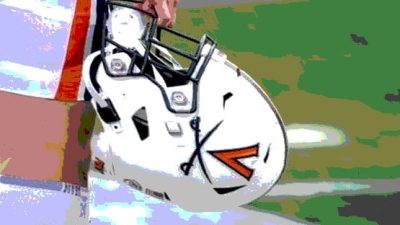
A man at Home Depot last night told me that his wife told him that Chris Jones was being bullied by UVA Football players because he wasn’t good enough to make the team.
A friend who is a big UVA fan told me that he’s been around enough athletes to get suspicious when fallen heroes are painted as saints.
This is the media narrative on this story at work.
The prevailing narrative has cast Jones, who faces second-degree murder charges in the shooting deaths of UVA football student-athletes Devin Chandler, Lavel Davis Jr. and D’Sean Perry, himself as a victim, somehow, and the people that he shot in the head – one of them while sleeping – as somehow having deserved it.
The narrative got its legs, first and foremost, because someone in the sports media relations office at UVA Athletics felt it necessary to give Jones, a walk-on who was with the UVA Football program for a couple of weeks in the summer of 2018, his own profile page on the football team website, and left it there four and a half years later.
That’s why, when Jones emerged as the suspect in the Nov. 13 shootings, the headlines referred to Jones, who didn’t even make it to preseason camp in 2018, as a “former football player.”
The connection between him being a “former football player” and bullying came from the press conference the morning after the shootings, when it emerged that University investigators had been in contact with Jones regarding a report that he had told a student he had a gun, and also that there was an unrelated investigation into hazing involving Jones.
Media reports put two and two together and made it out that the hazing and gun investigations must have had to do with him being a “former football player” who was being “bullied.”
That’s why the guy in the Home Depot and my friend who is a UVA fan assume that Jones was being bullied and lashed out at his aggressors.
We know from Google Analytics that our reporting trying to get into the details of Jones’ background has been getting tens of thousands of clicks, but the prevailing narrative that emerged in the first 12 hours after the shooting obviously still has legs.
The facts of Jones’ background: What we know
For those who haven’t kept up, here’s the Cliff’s Notes version of what we have learned on this case:
We know now that Jones had been the president of a UVA fraternity, and though University officials haven’t had anything to offer in terms of specifics into the hazing allegation reportedly involving Jones, it would be logical to think there could be a link between his fraternity time and hazing, much more so than it being related to his brief time with the football program four years ago.
Media reporting on the perspectives of family and friends in the aftermath of the shooting tells us that Jones had felt bullied since high school, and that Jones had been suspended from school several times for fighting.
Jones himself told The Cavaliers Daily in 2021 that he had been “bullied a lot” in high school.
According to a Colonial Heights gun dealer, Jones had tried several times to purchase a gun, before finally being able to purchase two earlier this year.
The purchases were legal even though Jones was convicted in 2021 on a concealed weapons charge.
A key detail, maybe the most important: there had been no visible interactions between Jones and any of his victims on the nearly 11-hour charter bus trip to Washington, D.C., and back to Charlottesville on Nov. 13, until the final moments of the trip, when Jones opened fire.
Another look at the two plus two of this case
It would seem to stand to reason that if Jones was being bullied by his victims specifically, or members of the football program more generally, something would have happened between them earlier in the trip.
By all accounts, Jones was an unknown entity to the victims.
The armchair psychiatrist in me looks at these details and surmises that Jones was suffering from an undiagnosed and untreated social anxiety disorder.
For many, social anxiety disorder leads them to be shy and withdrawn in social situations; but for some, the response to social rejection includes aggression and hostility.
That could be why he had gotten into all those fights as a teen, and why he felt the need to have a gun in his pocket, in his mind for protection, as he walked to class on Grounds and, fatefully, joined students on a field trip to D.C.
If anything, the parts of the story about Jones being a “former football player” and his victims being football players are linked because he felt rejection from his failed effort to walk on in 2018 – emphasis on him “feeling” rejection.
There’s no indication that his victims, who themselves weren’t part of the football program in 2018, knew who Jones was, much less that he had tried to walk on to the football team years ago.
They were just in the wrong place at the wrong time.










